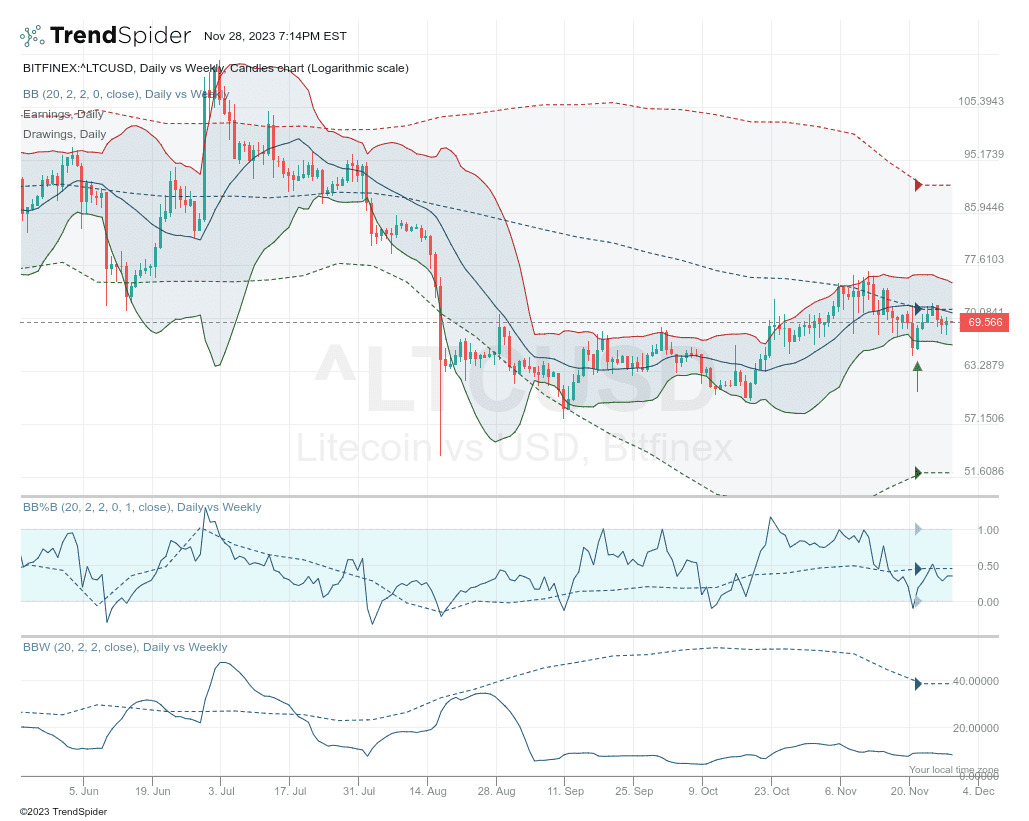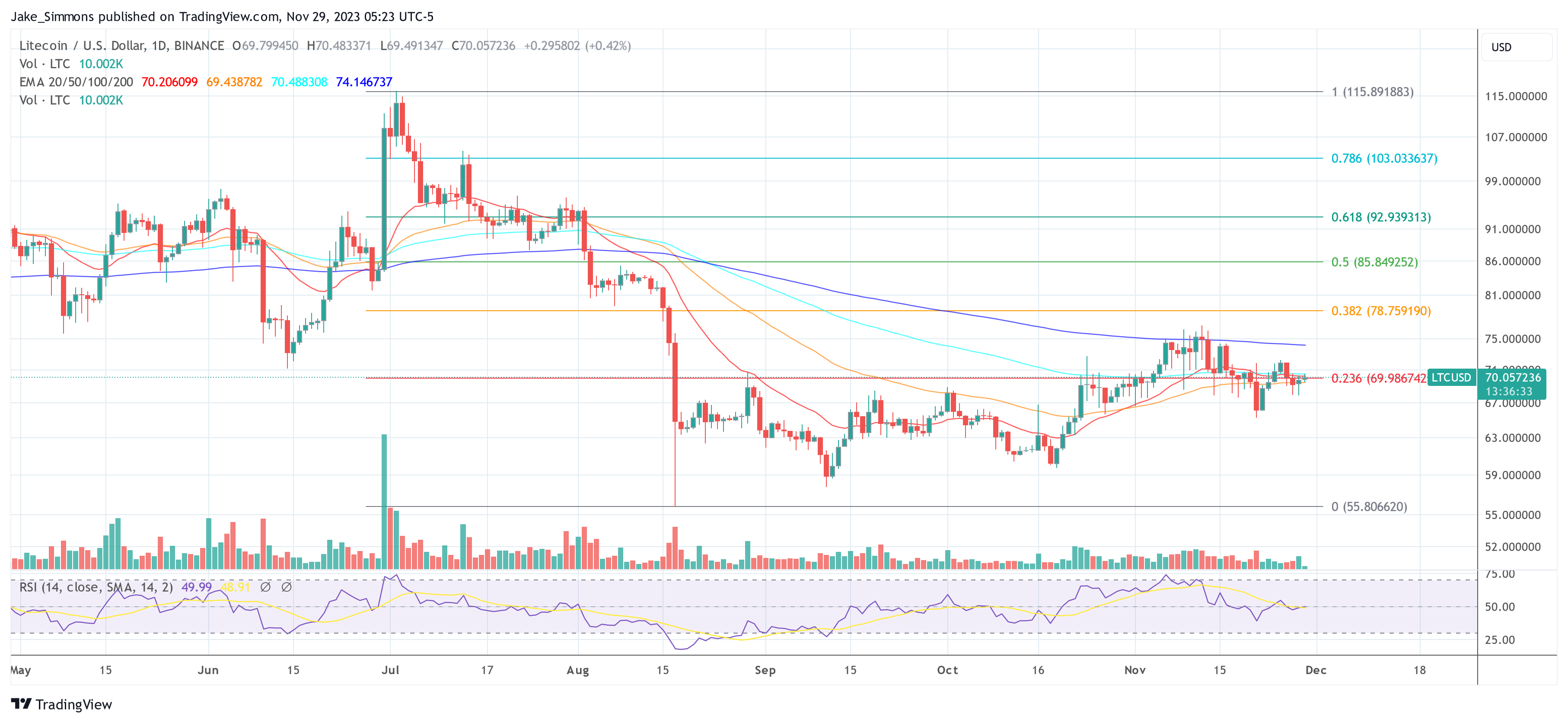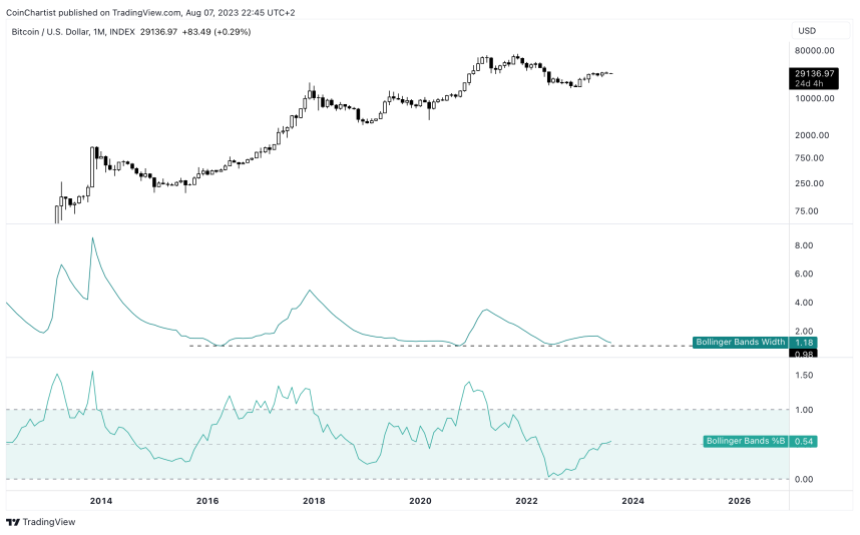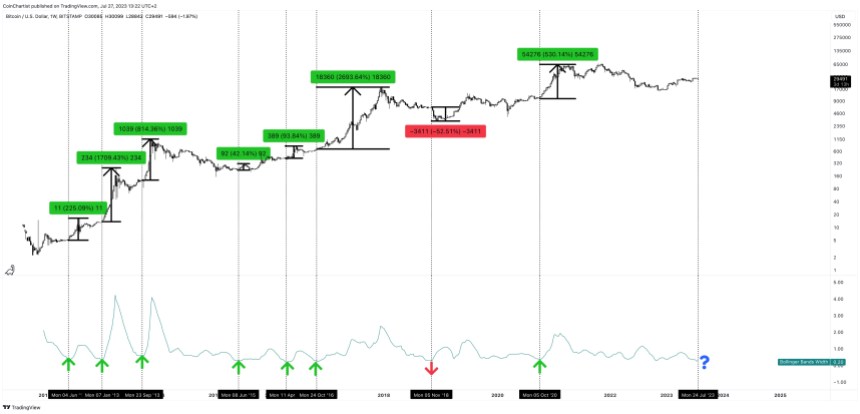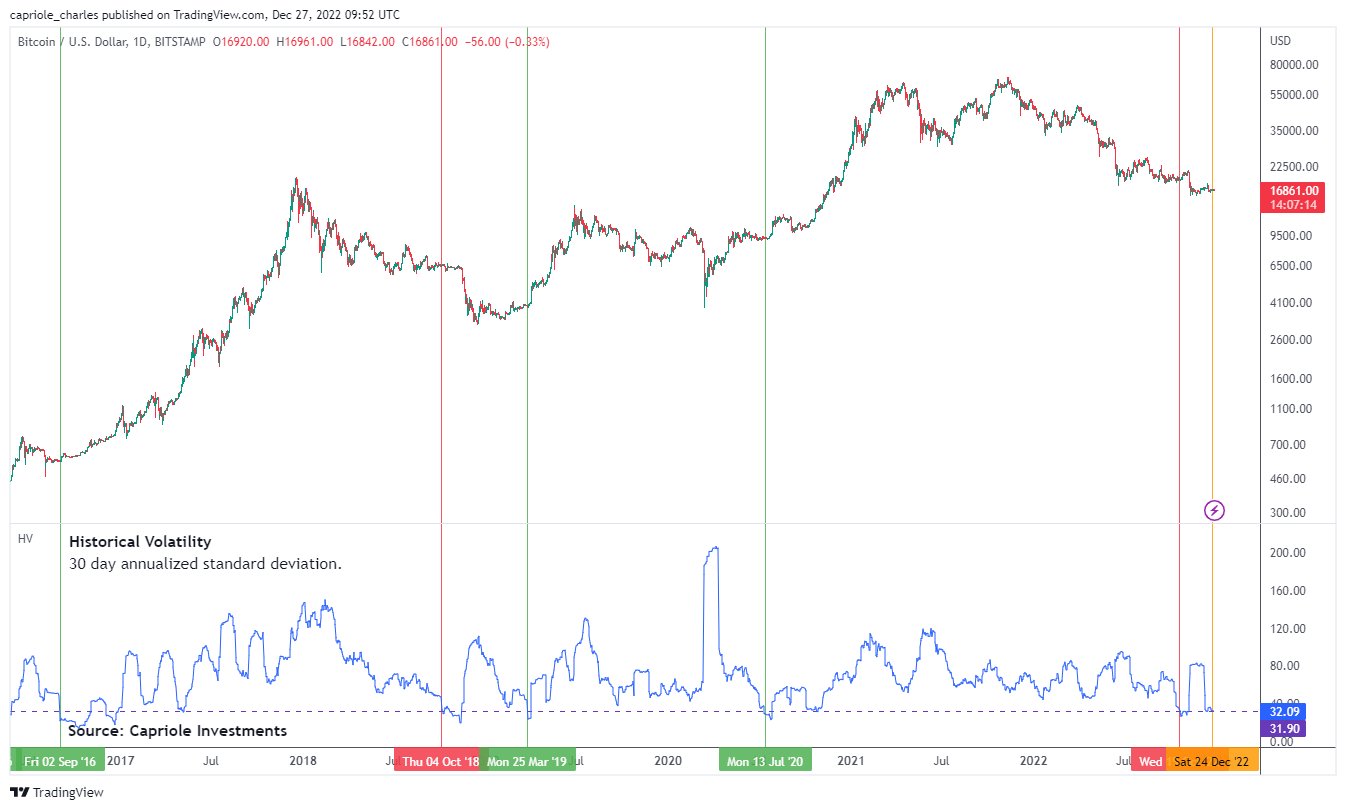John Bollinger, a legendary Bitcoin (BTC) trader known for creating the Bollinger Bands strategy, has recently shared an optimistic view on Bitcoin’s future.
Bitcoin Poised For Further Surge?
In a post on X, John suggest that Bitcoin’s price is likely to “break higher” from its current levels. This prediction is based on his analysis using the Bollinger Bands chart, a popular technical analysis tool he developed. For context, Bollinger Bands are a type of statistical chart characterizing the prices and volatility of an asset over time.
They consist of a set of three lines: the middle line typically represents the simple moving average of the asset’s price, and the other two lines are plotted at a standard deviation above and below the average. This tool helps traders to assess market conditions and potential price movements.
I think it breaks higher. $btchttps://t.co/vH9yoFa2Ut
— John Bollinger (@bbands) January 4, 2024
Bollinger’s prediction using this methodology indicates a positive outlook for Bitcoin, especially significant in light of the recent market turbulence.
Bitcoin’s Recovery And $50,000 Price Target
So far, Bitcoin’s journey in the crypto market has been marked by resilience, as evidenced by its recovery from a notably down turn in the market that resulted in the asset to trade in the $40,000 region.
Currently trading above the $43,000 mark, Bitcoin has shown a 3% growth in the past 7 days. This rebound is particularly noteworthy following a bearish report from Matrixport concerning a rejection of spot Bitcoin exchange traded funds (ETFs) by the US Securities and Exchange Commission (SEC).
Joining Bollinger in bullish predictions is Dan Gambardello, another well-respected analyst in the crypto space. Gambardello has projected an upward breakout for Bitcoin, potentially leading the digital currency to reach the $50,000 mark in the short-term and $60,000 in the long term.
This projection is tied to the anticipation of a spot Bitcoin ETF approval, which could serve as a significant catalyst for Bitcoin’s price movement. Gambardello explains that this upward trend would represent a historical breakthrough for Bitcoin, especially in terms of breaking through the lower highs of its Fibonacci level.
Bitcoin ETF Ticking Time Bomb! Approval Could Trigger Historic Crypto Rally!
Intro 00:00
Big Grayscale news 1:10
Bitcoin ETF final stretch 2:30
BTC price pressure building 3:15
$50k Bitcoin target 5:10
BTC attempting something it’s never done 6:30
Bitcoin dominance and altcoins… pic.twitter.com/uZZ2YrblCO— Dan Gambardello (@cryptorecruitr) January 4, 2024
Notably, it is evident that the predictions from both Bollinger and Gambardello hinge significantly on the US SEC decision regarding the approval of a spot Bitcoin ETF. While optimism prevails, Gambardello has also cautioned that a rejection could lead to a decline in Bitcoin’s price, potentially dropping below $40,000 to find support around $37,000.
Featured image from Unsplash, Chart from TradingView
